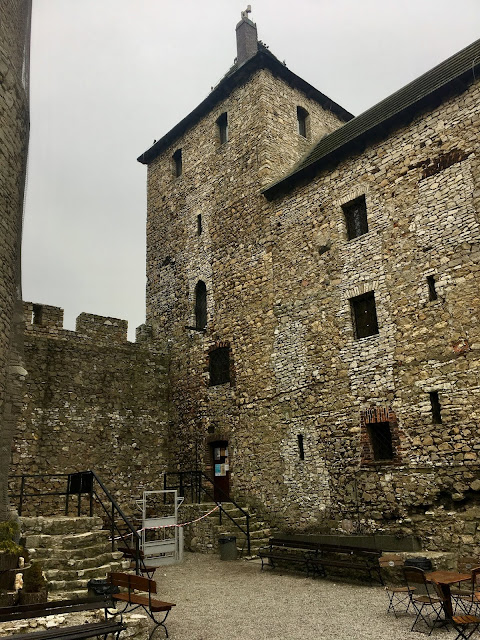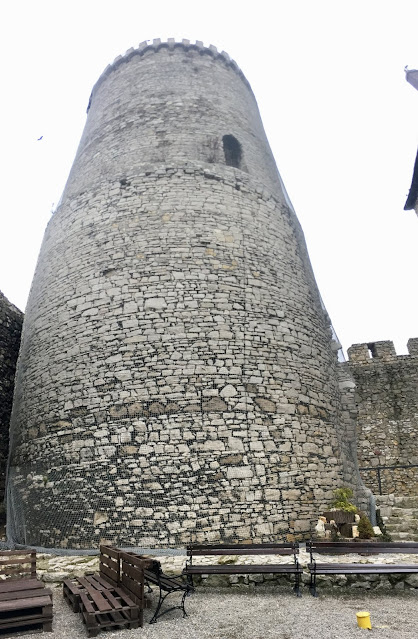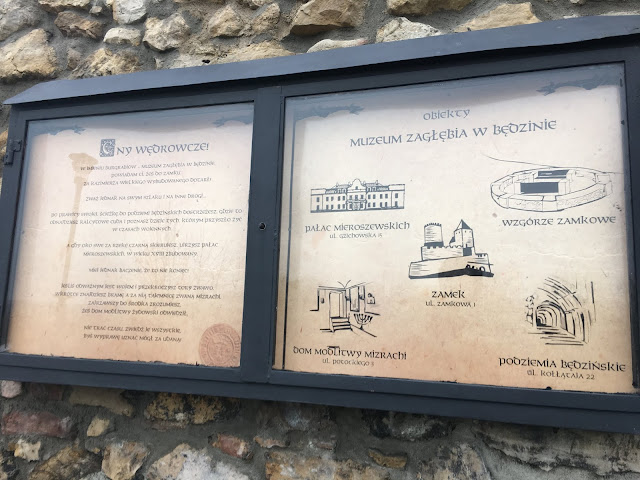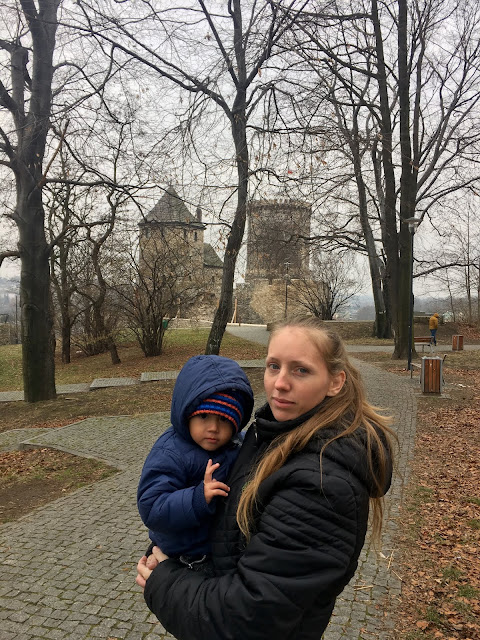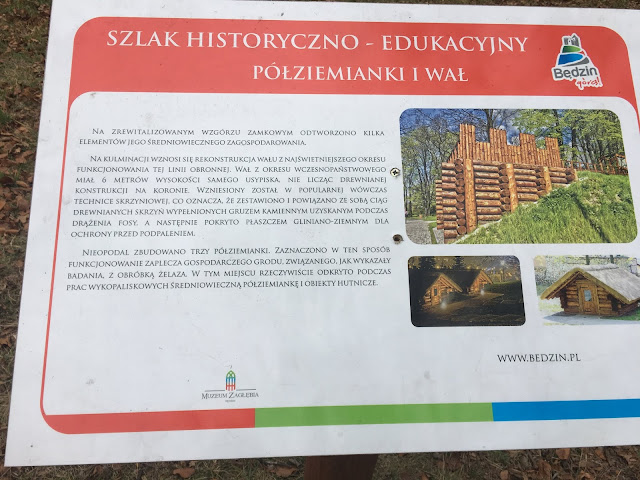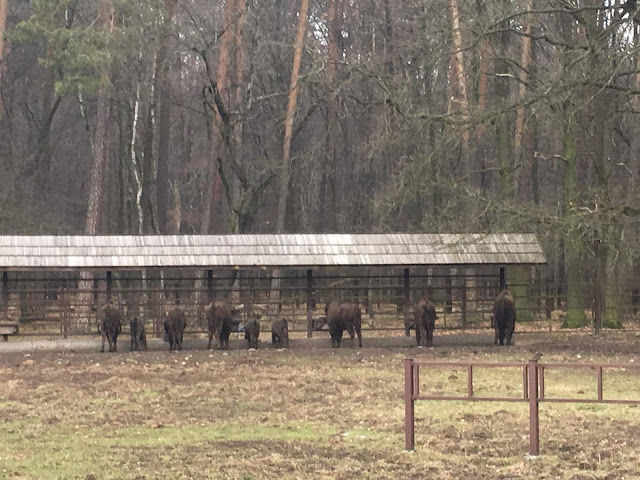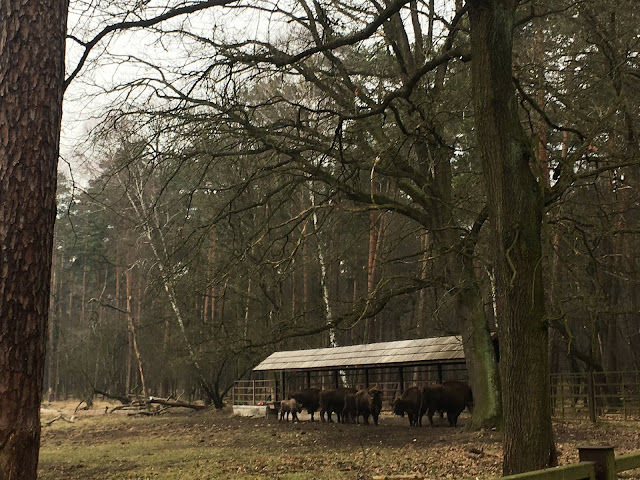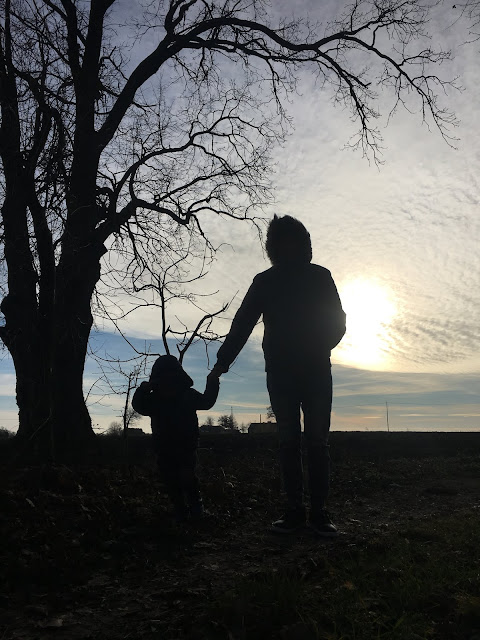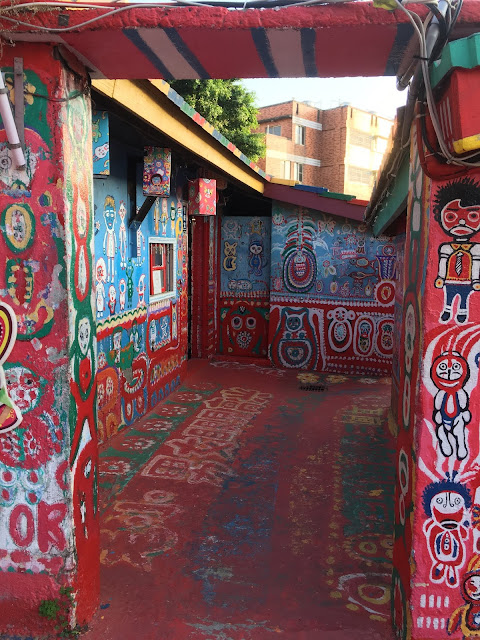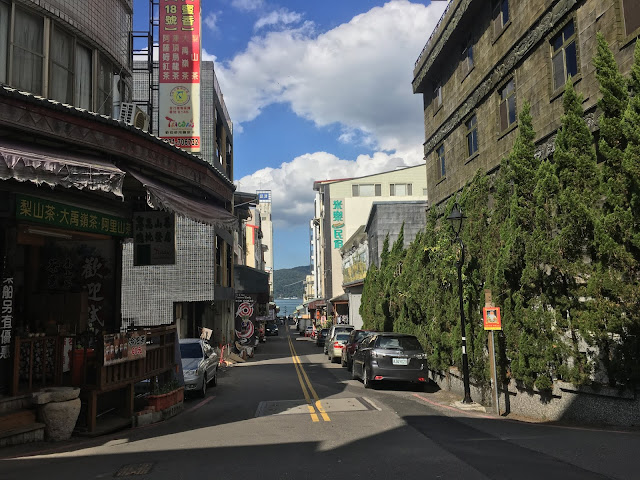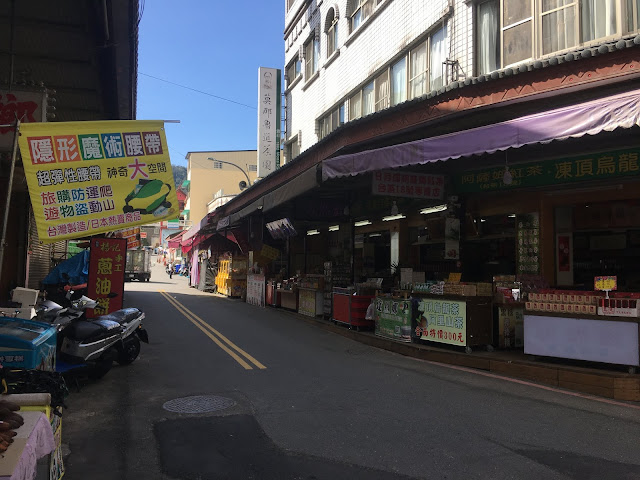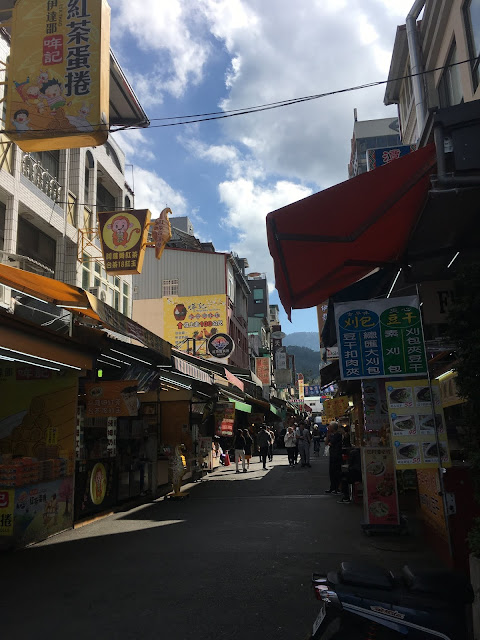Last weekend, we visited family in Tychy, Silesian Voivodeship. On Saturday, our son was feeling better, so we visited the Bison Reserve and Będzin Castle. We didn't go inside the castle to see the museum, only walked around the building. I didn't think there was much to see, as we have already visited a few castles before. I also wanted to see the Błędów Desert, but my husband thought there was nothing to see, so we went straight back to my aunt's place. The afternoon weather wasn't getting any better, and it started to snow later on. Their apartment is quite small, so it felt uncomfortable to stay inside for so long. On Sunday, we returned to my father's place. Once again, the road was nothing but a huge mess. I also checked out some other places to visit, but the ticket prices were really high. Sometimes it costs 150 NTD just for a parking place, and even more than that for tickets to some attractions. Traveling as a family in Poland seems to be quite expensive.
Będzin Castle
The Będzin Castle dates back to the 14th century and was preceded by a wooden fortification that was built in the 11th century. It played an important role as a fortification in the Kingdom of Poland and later in the Polish-Lithuanian Commonwealth.
The village of Będzin originated in the 9th century, and the local wooden fort, which records show existed as early as the 11th century, was destroyed during the Tatar invasion in 1241 but was subsequently rebuilt.
The castle consists of two towers, a cylindrical one and a square one, with smaller buildings attached to them. It had three layers of walls and was connected to the city walls, parts of which have survived to this day.
During the reign of Casimir III the Great, the castle was upgraded from a wooden fortress to a stone one, and the stone fort became operational as early as 1348. The growing trading village of Bytom was granted Magdeburg Law city rights shortly thereafter, in 1358.
The castle served as a military outpost on the southwestern border of the Kingdom of Poland (later the Polish-Lithuanian Commonwealth). It was the westernmost fortification and was intended to defend against any invasion from Bohemian or Silesian lands into Lesser Poland. In 1364, the castle was visited by Charles IV, Holy Roman Emperor. In 1588, Maximilian III, Archduke of Austria, was held prisoner here after his defeat in the War of the Polish Succession.
The castle fell into disrepair in the late 16th century. The fire of 1616 and damage during The Deluge in 1657 further contributed to its destruction. The fortress was periodically repaired, but due to changes in the borders and relations between Poland and its neighbors, it lost much of its importance. After the partitions of Poland, Będzin came under Prussian control, and the castle became the property of the Hohenzollern family. In 1807, the nearby lands were transferred to the Duchy of Warsaw, and in 1815, to Congress Poland. In 1825, the castle was in a state of disrepair, and when a piece of stone crushed a passerby, the demolition of the castle was ordered. However, before it could be started, the castle was declared a monument. In the 1830s, the castle was purchased by Count Edward Raczyński and partially rebuilt, with a Protestant church temporarily housed inside. After Raczyński's death in 1845, plans to open an academy or a hospital there were abandoned, and the castle once again fell into disrepair. It wasn't until the times of the People's Republic of Poland that the castle was rebuilt, and a museum was opened there from 1952 to 1956.
See also: Pszczyna Bison Reserve









